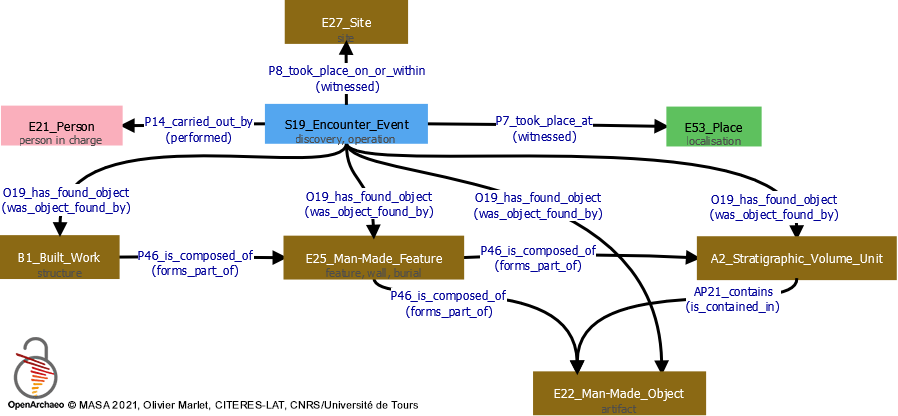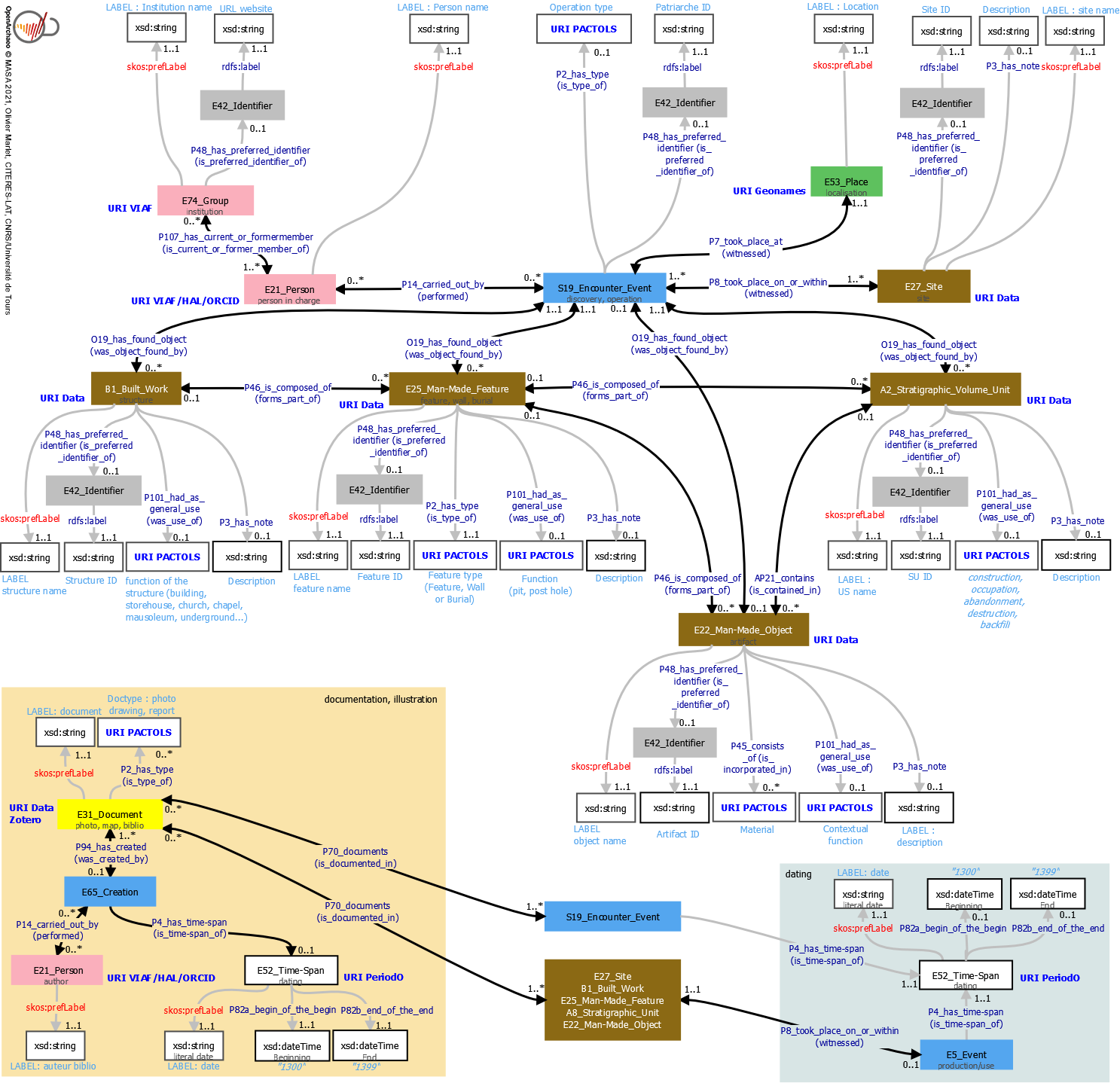Semantic web plateform for archaeological data
MASA (Mémoire des Archéologues et des Sites Archéologiques), a consortium of the TGIR Huma-Num, in partnership with the SPARNA company, specialized in semantic web, and the Laboratoire d’Informatique Fondamentale et Appliquée de Tours (LIFAT), has developed the OpenArchaeo semantic web platform. Exploiting the archaeological triplestores paired with the CIDOC in a federated way, OpenArchaeo has been designed with two distinct interfaces.
Machine Interface : Federation
Access to the SPARQL EndpointThis query service enables to write federated queries to multiple sources in SPARQL language (query language dedicated to the semantic web). This interface is associated with web services to exploit the MASA Triplestore. Its purpose is to be operated by machines and is therefore more accessible to computer specialists.
User Interface : Explorer
Access to the ExplorerThe Explorer, resolutely user-friendly, is based on a system of icons and concepts well understood by archaeologists (Stratigraphic Unit, Artifact, Feature, Site...). In order to produce a SPARQL query from the natural language, OpenArchaeo has been the subject of the development of the SPARNATURAL component, which is modular and reusable. This system enables to generate a SPARQL query intuitively, without knowledge of the SPARQL language, but with knowledge of the main concepts of archaeology.
The OpenArchaeo data model
To implement the MASA Triplestore, the datasets are mapped to the CIDOC Conceptual Reference Model (CRM), the domain ontology dedicated to cultural heritage, coordinated by an international consortium (CRM GIS). The role of the CIDOC CRM, for MASA, is to serve as a single, transversal overlay for communicating heterogeneous archaeological datasets published on the web, in order to make them interoperable without modifying either the format or the structure of the initial datasets.
The MASA triplestore is based on the CIDOC-CRM ontology and some of its extensions (CRMarchaeo, CRMsci and CRMba). It is a generic model that covers the basic concepts found in most archaeological corpuses (site, operation, structure, feature, wall, burial, stratigraphic unit and artifact).
Each basic concept is then detailed: identifier, appellation, description, typology. Two modules complete this model, one for associating documentation to any basic concept and a second for the potential dating of each concept.
Publication
Marlet Olivier, Francart Thomas, Markhoff Béatrice et Rodier Xavier - OpenArchaeo for Usable Semantic Interoperability, in : Poggi Antonella - Proceedings of First International Workshop on Open Data and Ontologies for Cultural Heritage (ODOCH) co-located with the 31st International Conference on Advanced Information Systems Engineering (CAiSE 2019), Rome, Italy, June 3, 2019, Sapienza University of Rome, Rome, 2019. Online : http://ceur-ws.org/Vol-2375/paper1.pdf (PDF)

